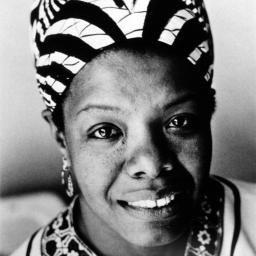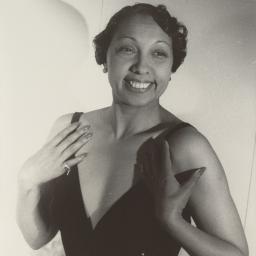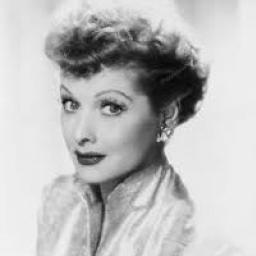Frances Marion

The winner of two Academy Awards, Frances Marion is credited with writing more than 130 produced films during Hollywood’s silent and early sound eras. Her female-driven films showcased women’s strengths while delighting popular audiences.
Marion Benson Owens was born on November 18, 1888 in San Francisco. Her parents, Len Douglas Owens, an advertising executive, and Minnie Hall, a pianist, divorced when Marion was ten. After demonstrating a proclivity for writing and sketching at a young age, she attended the Mark Hopkins Art Institute in San Francisco. As a teenager, Marion sold her stories, poems, and artwork to magazines. In 1906, she married her 19-year-old instructor from the Art Institute, Wesley de Lappe.
Following the advice of family friend and acclaimed writer Jack London, to “go forth and live” so that she could capture the human spirit in her art, Marion undertook a series of odd jobs such as telephone operator and fruit cannery worker. Between her work and her artistic pursuits, she had little time for her husband; she and de Lappe divorced in 1911. Marion worked as a commercial illustrator and as a reporter for the San Francisco Examiner.
Marion married wealthy businessman Robert Pike and in 1912 the couple moved to Los Angeles. Soon, she fell into the orbit of the nascent film industry in Hollywood. Vaudeville star Marie Dressler, whom Marion had interviewed back in San Francisco, became a close friend and introduced her to others in the field. A burgeoning industry that lacked established gender norms, the movies offered an array of opportunities for women. Marion went to work for director Lois Weber and assumed the professional name Frances Marion. Marion was interested in working behind the camera, but took on a variety of duties for Weber: she acted, shifted scenery, wrote press releases, and cut film. She learned on the job how much she loved making movies and became determined to write them.
It was silent film star Mary Pickford who gave Marion the opportunity to write for the screen for the Famous Players-Lasky studio (later known as Paramount Pictures). Marion then went to New York to write for World Films, where she rose to head of the scenario department (before screenplays were common, scenarios served as roadmaps for the actors). Earning $200 per week, she became the highest-paid writer in the film business. While she was in New York, Pike sued Marion for divorce on the grounds of desertion.
Marion returned to Los Angeles and resumed her collaboration with Pickford, writing the successful 1917 films Poor Little Rich Girl, Rebecca of Sunnybrook Farm, and The Little Princess, and 1918’s Stella Maris. The two found a winning formula with Marion writing spirited and irreverent little-girl roles for Pickford. Marion was making $50,000 per year by 1918, but she left it behind to become a war correspondent for the government. She wrote and edited a film on women’s contributions to the war effort and was the first Allied correspondent to cross the Rhine after the Armistice.
When she returned in 1919, Marion married her third husband, Frederick Thomson, a former Army chaplain who became a star cowboy on screen. Marion wrote many scripts for Thomson under the pseudonym Frank M. Clifton.
In 1920, Marion wrote the hit film Humoresque. She directed two films herself, but found that she preferred writing to directing. She freelanced for various studios before signing with Metro-Goldwyn-Mayer Studios (MGM) as a screenwriter in 1926. Marion's popular films included the spectacle western, The Winning of Barbara Worth (1926), as well as Stella Dallas (1925), The Scarlet Letter (1926), and The Wind (1928). The latter three films are examples of Marion’s trademark female-led melodramas, all based on novels. She described the key to adapting novels for star actresses: “We tear it down, we reconstruct it, we make the woman dominate, and the male character as passive as every woman would like to have her husband.”
Marion and Thomson had two sons: Frederick, in 1926, and Richard, in 1927. Thomson died from tetanus on Christmas Day 1928, leaving Marion to care for the young boys. Six months after his death, she returned to MGM and wrote Anna Christie (1930), Greta Garbo’s first “talkie.” In 1930, Marion became the first female writer to win an Oscar for her original prison story, The Big House. That same year, she married George Hill, the film’s director. The marriage lasted less than a year, but they remained friendly until Hill’s death in 1934.
Marion helped revive the career of her first Hollywood friend, Marie Dressler. Marion wrote several roles for the sixty-something Dressler, including Min and Bill (1930), for which Dressler won an Academy Award for Best Actress. In 1932, Marion won her second Academy Award for The Champ. When the Screen Writer’s Guild was founded in 1933, Marion was elected its first vice-president, the only woman on the organization’s board.
As the decade went on, screenwriting became repetitive and less creatively satisfying to Marion. But it was also the increasingly male-dominated studio system that contributed to her discontent. As movies transitioned from silent to sound, films studios grew more established and profitable. The fluid nature of the early film industry, one that had made it possible for women to flourish both on- and off-screen, all but disappeared. Marion’s screenplays were frequently co-credited to male screenwriters and her consultant work often went uncredited entirely. She continued to work on-and-off for MGM until the studio let her go in 1946.
After leaving the film industry, Marion channeled her creativity into writing novels and plays, sculpting, and painting. She passed away in Los Angeles on May 12, 1973. Her prolific and accomplished career stands as a testament to the significant contributions women made in the early years of the film industry.
Published March 2022.
- Beauchamp, Cari. "Marion, Frances (1888-1973), screenwriter." American National Biography. Feb. 1, 2000; Accessed 4 Jan. 2022. https://doi.org/10.1093/anb/9780198606697.article.1800790
- Blakemore, Erin. “This Forgotten Female Screenwriter Helped Give Hollywood Its Voice.” TIME. Jan. 21, 2016. Accessed Jan. 7, 2022. https://time.com/4186886/frances-marion/
- “Frances Marion Dies on Coast; Screenwriter Won Two Oscars.” The New York Times. May 14, 1973. Accessed Jan. 7, 2022. https://www.nytimes.com/1973/05/14/archives/frances-marion-dies-on-coast-screenwriter-won-two-oscars-scored.html
- Hutchinson, Pamela. “The Woman Who Invented the Hollywood Screenwriter.” The Criterion Collection. May 18, 2020. Accessed Jan. 7, 2022. https://www.criterion.com/current/posts/6948-the-woman-who-invented-the-hollywood-screenwriter
MLA – Brandman, Mariana. “Frances Marion.” National Women’s History Museum, 2022. Date accessed.
Chicago – Brandman, Mariana. “Frances Marion” National Women’s History Museum. 2022. www.womenshistory.org/education-resources/biographies/frances-marion
Photo Credit: Photo-Play Journal, c. 1919 (public domain)
https://en.wikipedia.org/wiki/Frances_Marion#/media/File:Frances_Marion_in_war_uniform.jpg And https://archive.org/details/photoplayjournal03cent/page/n251/mode/2up?view=theater
Beauchamp, Cari. Without Lying Down: Frances Marion and the Powerful Women of Early Hollywood. United States: University of California Press, 1998.




